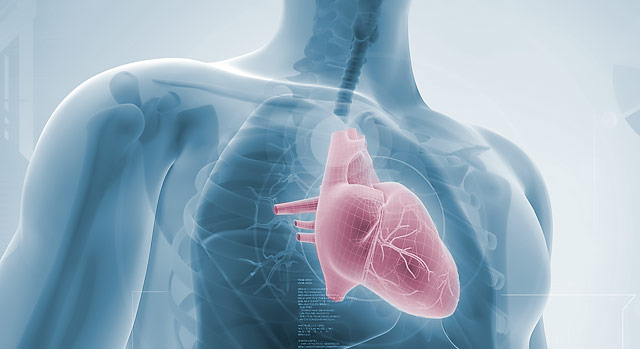Crash Diets; HF Quality Care Metrics; Cath Lab vs Surgical Suite Before Age 50
 - Cardiovascular Daily wraps up the top cardiology news of the week
- Cardiovascular Daily wraps up the top cardiology news of the week
So-called crash diets, with calorie counts kept in the range of 600 to 800 per day through meal replacement programs
, may hold a transient risk for the heart, researchers reported at the Cardiovascular Magnetic Resonance meeting in Barcelona.
In a study in which 21 obese people consumed such a diet for 8 weeks, MRI showed that the amount of fat in the heart had risen 44% and cardiac function deteriorated within 1 week and then improved over baseline by week 8.
"The sudden drop in calories causes fat to be released from different parts of the body into the blood and be taken up by the heart muscle," the study's lead author, Jennifer Rayner, BMBCh, of the University of Oxford in England, said in a press release. Because the effect might aggravate heart failure symptoms or increase risk of arrhythmias, patients with existing heart disease likely should have such a diet supervised by their physician, she suggested.
HF Hospitalization Metrics
Guideline adherence may be a better measure of the quality of heart failure care a hospital offers than is the volume of patients treated, researchers reported in Circulation.
In the study of the Get With the Guidelines-HF registry linked to Medicare data, "hospital volume as a structural metric correlates with process measures, but not with 30-day outcomes, and only marginally with outcomes up to 6 months of follow-up.
"Hospital profiling should focus on participation in systems of care, adherence to process metrics, and risk-standardized outcomes rather than on hospital volume itself," the researchers concluded.
Revascularization for Younger People
A 12-year follow-up of patients at one center in England suggested better outcomes with coronary artery bypass grafting (CABG) compared with stenting among younger people, researchers reported at the Society of Thoracic Surgeons annual meeting in Fort Lauderdale, FL.
Patients age 50 and younger at revascularization had similar stroke and mortality rates at 5 years but a lower risk of myocardial infarction, repeat revascularization, hospital readmission, and overall major adverse events with CABG. At 12 years, repeat revascularization and hospital readmission remained less likely for the CABG group, which subgroup analysis suggested was driven by three-vessel disease.
"Unfortunately this study is non-randomized and because it draws upon a limited number of patients from a single center, it is impossible to draw firm conclusions from it. A significant proportion of the PCI population was treated with bare metal stents, and there are many elements that suggest that the two groups are not truly comparable," cautioned Ajay Kirtane, MD, director of the Cardiac Catheterization Laboratories at New York-Presbyterian/Columbia University Medical Center in New York City, who was asked for his opinion.
Cardiometabolic Issues in India
Diabetes and hypertension prevalence are high in India, according to a nationally representative household survey study in JAMA Internal Medicine.
The crude prevalence of diabetes in India was estimated at 7.5% and hypertension prevalence was estimated to be 25.3% (defined by 140/90 mm Hg or greater). After age-standardization, the prevalence in India was higher than in the U.S. for hypertension (20% among women and 24.5% among men, versus 10.8% and 15.5% in the U.S., respectively) and on par for diabetes (6.1% and 6.5% versus 6.4% and 8.1%, respectively).
An invited commentary in the journal called the findings "not only a stark warning of the looming crisis of cardiovascular diseases in India, but also a call to action for the country," albeit one that might be hard to answer due to the fragmented care and the size, growth, and rapid urbanization there.
By: Crystal Phend
Source: https://www.medpagetoday.com/









